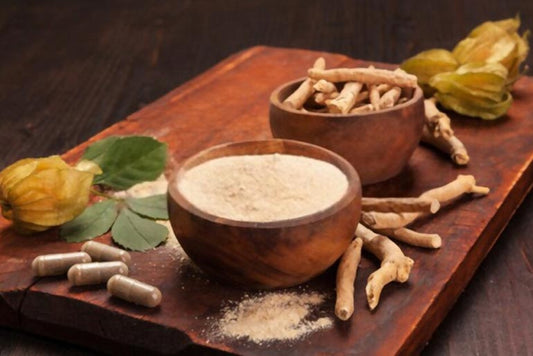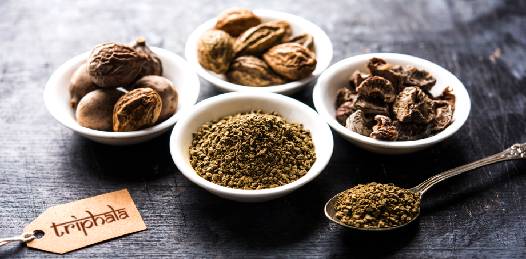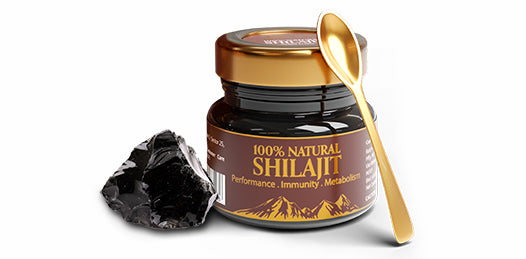

Highlights:
What is Arthritis?
Arthritis is a condition causing swelling of one or more joints. The word 'arthros' means joints, and 'itis' refers to inflammation.
According to Ayurveda, Arthritis is a Vata type of disorder that restricts the mobility of the joints.
What causes Arthritis?
There are several risk factors for the formation of Arthritis.
- Age: Age-related degeneration is common as the risk of Osteoarthritis and Rheumatoid Arthritis increases with age.
- Gender: Women are susceptible to having Osteoarthritis and Rheumatoid Arthritis, whereas Gout is common among men.
- Family history: You are more susceptible to suffer from Arthritis if your parents or siblings have the disorder.
- Joint injury: A previous sport or accidental injury may trigger Arthritis in the later stage.
- Body Weight: Obese or overweight people tend to suffer from Osteoarthritis. Excess body fat puts pressure over the weight-bearing joints triggering Arthritis.
Types of Arthritis
Arthritis is of several types depending upon the causes, symptoms, and site of deformity.
Rheumatoid Arthritis : Rheumatoid Arthritis is an autoimmune disorder where one's antibody attacks against the immune system. It is a chronic inflammatory disorder and affects more than just the joints. RA can cause severe physical debility. Rheumatoid Arthritis can be correlated to 'Aamvata' in Ayurveda. It is due to the accumulation of aam or toxins in the joints leading to pain, swelling and stiffness.
Osteoarthritis : Osteoarthritis is due to degeneration of cartilages of the joints that occur with age. When the cartilage degenerates, the bones rub on the other bone, causing popping sounds, pain and inflammation.
Old and obese women are more prone to having Osteoarthritis. According to Ayurveda, the vata aggravation in the old age and degeneration of the bone tissue (Asthi dhatu) leads to Sandhigata Vata.
Gout : Gouty Arthritis is due to the deposition of uric acid crystals in the joints due to a defect in purine metabolism. Purines are found in the proteins that we consume, which are filtered and eliminated through urine. But kidneys fail to eliminate purines when consuming a high protein diet or excessive alcohol intake. This leads to sedimentation of uric acid crystals, causing redness, pain and inflammation in the smaller joints.
In Ayurveda, it is related to 'vatarakta'. Due to excess alcohol consumption and indulgence in sour, spicy and hot foods, the blood tissue (rakta dhatu) gets vitiated in the body. This blood tissue blocks the normal movement of vata, causing vatarakta. Other doshas like Pitta and Kapha might also be involved.
Psoriatic Arthritis affects people who already suffer from psoriasis. Joint pain, swelling and stiffness are the main symptoms of Psoriatic Arthritis.
Polyarthritis is a condition in which five or more joints are affected with Arthritis. There may be pain, burning sensation, stiffness of the joints and fever. The symptoms can be acute or chronic.
SLE (Systemic Lupus erythematosus), commonly known as Lupus is a chronic autoimmune disease that causes joint pain, fever, skin problems and organ damage.
Spondyloarthritis is a condition where there is inflammation in the bones of the spinal column. Simply, it is a condition with 'spondylitis' and Arthritis manifesting together. It includes ankylosing spondylitis that causes pain and stiffness in the back.
Symptoms of Arthritis
The Arthritis symptoms vary according to its type. According to Ayurveda, the symptoms also depend upon the predominance of Ayurvedic dosha.
Rheumatoid Arthritis:
- The main symptom is morning stiffness. You might be experiencing morning stiffness in the joints that reduce as you start walking or after immersing in hot water.
- There is a stabbing kind of pain in all the joints, especially the body's smaller joints.
- The symptoms also spread to the larger joints such as the knees, wrists, elbows and ankles.
- The joints become tender, warm and swollen joints.
- Fatigue, fever and loss of appetite are some Arthritis symptoms.
- In about 30-40% of the cases, Rheumatoid Arthritis affects other body parts like the lungs, heart, skin, eyes, bone marrow and nervous system.
- Long-standing Rheumatoid Arthritis can cause permanent bending and disability to the fingers known as the 'swan neck deformity.
RA is a Kapha predominant condition causing stiffness of the joints, according to Ayurveda. The involvement of Vata and Pitta doshas are also seen along with Kapha dosha that causes pain and burning sensation, respectively.
Osteoarthritis Symptoms:
- Severe pain and inflammation, especially while walking or climbing stairs, is one of the main symptoms of Osteoarthritis.
- You may hear some cracking or clicking sounds from the joints. These cracking/ popping sounds are called 'crepitus.'
- The joints become stiff after a few minutes of inactivity and pains even after few minutes of physical activity.
In Ayurveda, it is explained as Sandhigata Vata. Here, the aggravated Vata lodges inside the joints, causing pain and inflammation. Sandhigata Vata will affect only the joints, unlike Aamavata.
Gout:
- There is intense pain in the affected area (Usually joints of the greater toe or thumb).
- Burning sensation
- Stiffness of the finger
- Swelling and heat. You might feel like the 'joint is on fire.'
There are flare-ups and periods of remission like Rheumatoid Arthritis.
Ayurveda explains some subtypes of Vatarakta due to Pitta causing thirst, fever, sweating, fainting and suppuration. Vatarakata with Kapha predominance can cause heaviness, numbness and cold joints.
How do you identify Arthritis?
Apart from the visible symptoms, certain investigations and blood work confirms the specific type of Arthritis.
- Complete Blood Count (CBC) and Erythrocyte Sedimentation rate (ESR) and some basic tests done for Arthritis.
- Elevated Serum Uric acid confirms gouty Arthritis.
- MRI and X-Ray are also done to confirm the severity of the joint deformity.
- C-reactive protein (CRP) test and RA test is mainly done in Rheumatoid Arthritis.
- Anti-CCP also confirms the presence of antibodies in SLE, RA and psoriatic Arthritis.
Home remedies for joint pain

Though extensive treatment is required to treat Arthritis, some home remedies help to reduce pain and inflammation.
- Apply oil heated with garlic and camphor on the painful joint. Wash it after 30 minutes with hot water. (Avoid applying oil if you have Rheumatoid Arthritis)
- Keep a hot water bag on the pain and stiff joints.
- Soak the painful joint in hot water mixed with Epsom salt, rock salt or dry ginger.
- Keep the painful joint elevated.
- Reduce weight.
- Practise joint rotation exercises daily to increase the range of motion.
- Take 15-20 ml Giloy juice daily if you have gouty Arthritis to reduce pain and swelling. Giloy is the best herb to cure GoutGout, as mentioned in Charaka Samhita.
- Have 5-10 ml of diluted ginger juice or ginger-infused water if you have Rheumatoid Arthritis. Ginger is the best herb to cure RA, as per Ayurvedic texts.
- Boil powdered Shatapushpa or dill seeds with milk to form a paste. Apply this paste to painful and inflamed joints.
Arthritis - Ayurvedic treatment options

Is Arthritis curable by Ayurveda?
You worry not, if you can follow the diet recommendations, yoga and Ayurvedic medicines you can cure Arthritis through Ayurveda.
Ayurvedic treatment for Arthritis consists of shodhanam and shamanam.
'Shodhan' is purificatory therapy, performed when the disease is chronic or doshas imbalance is high.
The purificatory therapies of Ayurveda are:
- Panchakarma therapies like Vasti (enema therapy) and Virechan (purging therapy)
- Oil massage therapy (Snehanam)
- Fomentation therapy (Swedanam)
In case of mild symptoms or when the disease is of recent onset, Ayurvedic treatment involves administering herbs and simple oil massage and hot fomentation.
The herbal medications are chosen according to symptoms of the disease and chronicity. Shilajit is known to cure bone fractures and joint disorders. In folklore medicine, shilajit is made into a paste with egg yolk and applied a plaster around the affected area in case of fracture. Shilajit is mixed with rose water or seasame oil to strengthen the bones and joints. 130 gm of shilajit is taken with warm milk or warm water once or twice a day to heal arthritis.
Yoga for Arthritis

Regular practice of Yoga improves the symptoms of Arthritis. Yoga is known to help with
- Stiffness of the joints
- Inflammation
- Tenderness
- Flexibility of the joint
- Range of motion
Even 15- 30 minutes of regular Yoga practice help improve your arthritis symptoms.
Warm up-
- Ankle rotation
- Knee rotation
- Hip rotation
- Shoulder rotation
- Arm rotation
- Neck rotation
Exercises-
- Butterfly pose (Titilyasana)
- Cobra pose (Bhujangasana)
- Bow pose (Dhanurasana)
- Camel pose (Ushtrasana)
- Surya namaskar
- Cat - Cow pose (Bidalasana - Bitilasana)
- Downward dog pose (Adho muka shvanasana)
- Triangle pose (Trikonasan)
Finish with -
- Anulom vilom Pranayam
- Shavasan
Diet and lifestyle changes for Arthritis
Ayurvedic diet and some lifestyle changes can help you recover from the symptoms of Arthritis. The following are some of the diet recommendations:
- Avoid refrigerated food and drinks. Cold beverages, cold water, and refrigerated fruits are not recommended.
- Oily and deep-fried food like fries, chips, papad and vegetable fritters is known to worsen Arthritis.
- Sour foods like citrus, vinegar, pickles, fermented food and drinks like kombucha are avoided.
- Avoid processed and packed food like sauces, jams, nut butter and mayonnaise.
- Avoid non-vegetarian food.
The above tend to look like a long and exhaustive list of all your favourite foods. But trust us, just avoiding these triggers will itself solve your arthritis symptoms by 30-40%.
Instead, you can opt for the following diet:
- Include colourful and a variety of boiled vegetables and fresh fruits in your diet.
- Prefer a vegetarian diet.
- Include nuts like almonds, cashews, walnuts, dry figs, flax seeds and pumpkin seeds in your daily diet.
- Use warm water for drinking.
- Use spices like turmeric, ginger, cumin, coriander, fennel, black pepper, ajwain and asafoetida in your daily diet.
Healthy Food Swaps for Arthritis
|
Common food items |
Alternative Healthy options |
|
Kidney beans, chick pea, Urad dal |
Mung dal, Masoor dal, horsegram, |
|
Raw vegetable salads |
Boiled vegetable soups/ boiled or steamed vegetable salads |
|
Cold drinks, fruit juices/ milk shakes |
Warm water or soups |
|
Refined sugar |
Honey |
|
Refined flour |
Full fibre flour |
|
Refined oils |
cold pressed oils/ ghee |
|
Root vegetables like potatoes, yam, colacasia |
Bottle gourd, Ivy gourd, Ridge gourd, Pumpkin, ash gourd |
|
Curd |
Buttermilk |
Lifestyle recommendations to cure Arthritis
- Use hot water for bathing and all activities.
- Avoid exposure to cold breeze. Wear layers of protective clothing.
- Have a 30-minute mild exercise or Yoga in your routine.
- Steam or hot fomentation to the inflamed joints relieves pain and swelling.











